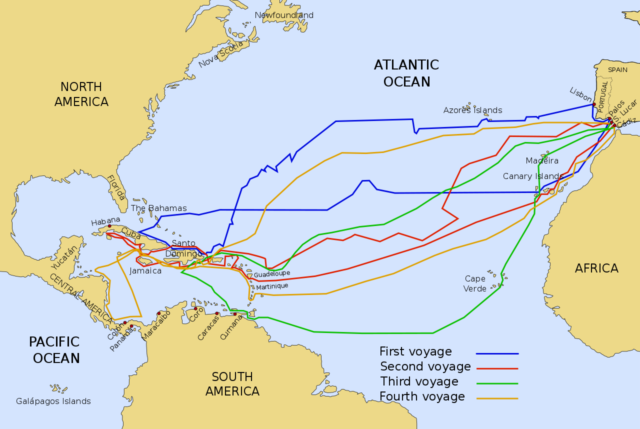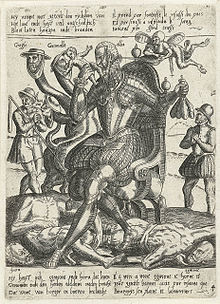The world map has changed many times throughout history. Whenever major world powers went in search of new continents and islands to settle, or when they fought wars against each other, the lines got redrawn. However, fighting a war did not always mean bloodshed and brutality. Many a time a conflict has been fought with words, otherwise known as a propaganda “war.”
One such case was Spain during (and beyond) the 15th and 16th centuries, when a huge propaganda campaign, dubbed the “Black Legend,” was used against them. The campaign sought to blame the Spaniards in matters concerning the colonization of the New World.
The story begins with Columbus and his discovery of the New World, following which, Europeans began arriving and settling the Americas and continued to do so over the subsequent centuries. The voyage of Columbus was, of course, a costly project, and somebody needed to sponsor it. While Portugal, England, and France all turned down sponsorship requests for the journey, Spain decided it would sponsor Columbus and his plan to open up a west-going sea route to India, China, and the Spice Islands.

The success of Columbus created envy. As each of the European nations started to explore and colonize new continents, Spain became the “black sheep” of the European “family.” Initially, it was the Dutch, angry that King Philip II of Spain controlled portions of the Habsburg Netherlands, as well as large parts of the Holy Roman Empire, that set the ball rolling. For the Dutch, Spain and everything that was Spanish was to be considered as barbaric, and so the propaganda went.
The propaganda campaign increased in energy as the House of Habsburg that ruled Spain pushed new ideas. Aside from the Dutch, the English, French, and Germans had their own reasons for spreading harmful rumors about the Spanish. Their collective effort pushed forward a narrative in which the Spaniards were depicted as villains, denouncing them for being wicked and base people, and that as they established colonies around the New World, they also enslaved and robbed the land’s indigenous people.

Aside from the political message of the propaganda, Spaniards were portrayed as lazy, ruthless, ignorant, and full of prejudices. Even people like the eminent philosopher from Germany, Immanuel Kant, wrote disparagingly about them, even though he had never personally traveled to Spain and knew little, if anything, of their culture firsthand.
The means and motives of this negative portrayal of the Spanish varied from place to place. But many believe that the alleged cruelty of the Spaniards provided a powerful ideological “sanction” so that the English, for example, could justify their actions of expanding into colonies that were originally Spanish. The Spaniards were always the “bad guys.”
What is not widely known is that, as historical accounts tell, as soon as the colonization of the Americas commenced after 1492, Spain was reportedly the power that at least attempted to introduce laws aimed at protecting the indigenous people. That is one example only, and a significant political move that was not taken into account by many Europeans and the war of words against Spain took its toll over the next centuries.

The hostility towards Spain may even provide explanations for several other historical events, such as the final outcome of the Mexican-American war, when territories such as California and New Mexico were contested, both eventually becoming states. Or in the case of the short Spanish-American war, which brought territory into the domain of the United States.

These territories had been, more or less, under the control of Spain. Cuba and Puerto Rico are two leading examples of significant Spanish influence. Also, there’s Guam in the Pacific, which originally belonged to Spain.
Once the 19th century ended and the wars were over, the territories that once belonged to Spain or Mexico were now suddenly part of the United States. Many of these territories are nowadays adorned with beautiful Hispanic-styled edifices, which speaks volumes of the once-dominant Spanish culture.

As for the term “Black Legend,” it seems to have appeared retroactively in 1914 in a book published by Spanish scholar and historian Julián Juderías. Entitled La Leyenda negra y la verdad histórica, the work of Juderías centers around the story of how foreign authors attempted to depict the Spanish as villains. The book further argues that these writers, using anti-Catholic rhetoric, relied heavily on Protestantism and the ideas of the Enlightenment found in North European capitals for their inspiration.
To what extent the Black Legend drove the way the various historical events unfolded remains a question that scholars will undoubtedly continue to tackle in the decades ahead. But in the present debates over the presence of statues of Christopher Columbus, it is clear that the emotions set loose in the 15th and 16th centuries are still in play.